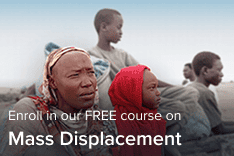Posts by chicagoland
The Road to Resilience: Part 3
How Immigrants Adapt with Support from our Counseling Center: The Invisible Load Written by Sonnie Mwangi, Mental Health Counselor & Christine Cummings, Director of Counseling Center Counselors understand that refugees and other immigrants carry more than the physical weight of their luggage when they arrive. There is an invisible load they carry of all that…
Read MoreThe Road to Resilience: Part 2
How Immigrants Adapt with Support from our Counseling Center: Identity and Status Change Written by Sonnie Mwangi, Mental Health Counselor & Christine Cummings, Director of Counseling Center As we continue the series on how immigrants adapt to life in the U.S., we’d love to explore identity and status change. In addition to the basic environmental…
Read MoreThe Road to Resilience: Part 1
How Immigrants Adapt with Support from our Counseling Center: Environmental Change Written by Sonnie Mwangi, Mental Health Counselor & Christine Cummings, Director of Counseling Center Change is a challenge to everyone. Think about the most natural thing as a birthday. Each year, as we age, our bodies change, growing when you are younger and bringing…
Read MoreEverything is New: One Refugee Family’s Adjustment after Eight Months in Chicago
Originally from Syria, Yaser, Mervat, and their three kids came to Chicago eight months ago after fleeing their country and spending years as refugees in Jordan. With your support, our team walked with the family through their initial adjustment in the areas of housing, employment, education for their kids, and more. Much remains in their…
Read MoreHow Car Donations Make a Difference
Saba plans to study medicine. But when she arrived in the US two years ago, she faced a huge challenge. Due to the conflict in her home country, she was missing the documents to prove her education and get started pursuing her dreams here. With the support of our Workforce Development team, today Saba is…
Read MoreTwo Things to Know about Asylum Law
Given the several thousand extra asylum seekers who have arrived in our communities this year, many volunteers, church partners, and community members are looking for ways to support these families and individuals. Two of our immigration attorneys, Sarah Flagel and Ryan McDuff, share a couple things about asylum law we hope you’ll find helpful. Context:…
Read MoreWhy We Welcome: The Joy We See
Please hear from Sarah Adnan, World Relief Chicagoland Staff Member I am Sarah Adnan and I work in a program that works with Afghan women that provides them extended cultural orientation classes teaching them many different topics like digital literacy, pharmaceutical care, laws in the U.S., and schooling options. Some of these women have never…
Read MoreWhy We Welcome: The Hope We Have
Piece written by Joseph Mosse, Ukrainian Support Case Specialist Procrastination is a dangerous thing. All the way back in August, I was asked if I could write a piece for a newsletter coming out in December about hope. The specific wording of the prompt was to write about “the hope that I have.” But I…
Read MoreWhy We Welcome: The Prayers We Pray
Written by Isoken Aiwerioba, Director of Operations for World Relief Chicagoland Suffer not the little children – a former colleague once told me how he had spent over 19 years in a refugee camp from when he was very young. He said though he spoke the language of his host country, he always felt like…
Read MoreWhy We Welcome: The Gift of Giving
By Cory Whitehead Ten years ago, I intentionally moved into a neighborhood where I was – and am – the “other.” Very few people look like me or have a white-collar career like me. Yet, I feel at home here. On my daily walk, my neighbors remind me of their own giving spirit, as simple…
Read More





